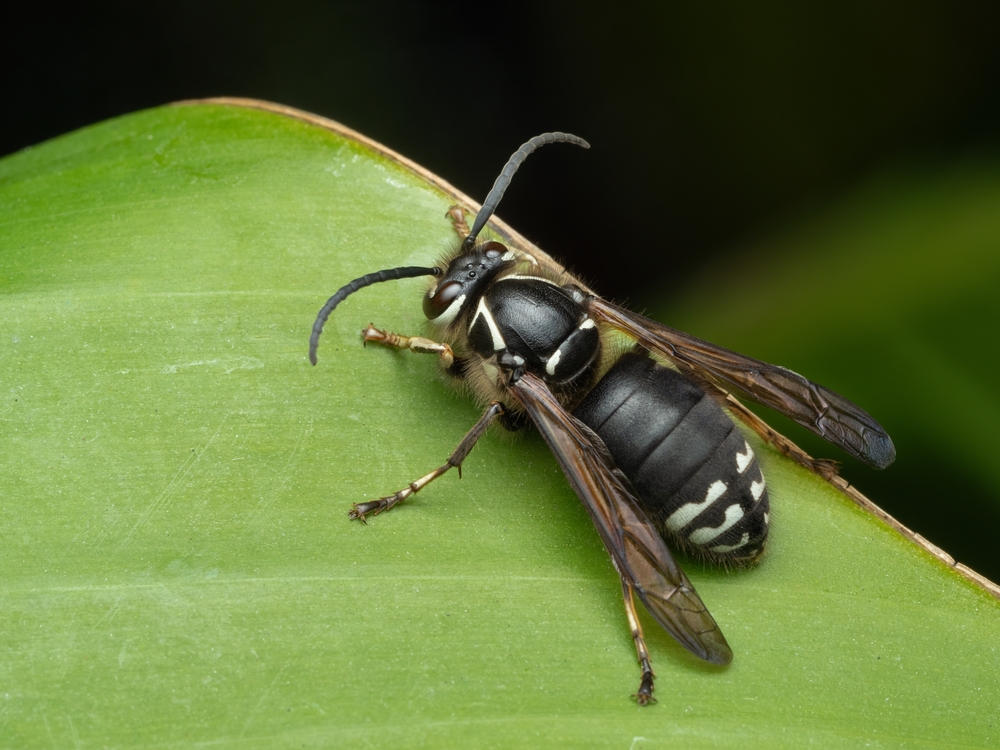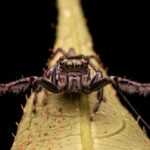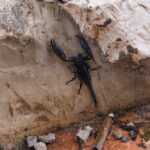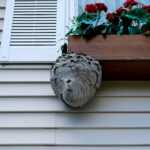Bald Faced Hornet Sting: Pain Levels, Allergic Reactions, and Treatment Tips
Worried about a bald faced hornet sting? This guide covers the pain level, possible allergic reactions, and how to treat it effectively. Read on to learn how to handle a sting and when to seek medical help.
- Bald-faced hornet stings cause significant pain and localized swelling, with potential for severe allergic reactions that may require medical attention.
- Prompt first aid, including cleaning the sting site and applying ice, can alleviate pain, but severe symptoms like difficulty breathing or widespread hives necessitate immediate medical help.
- Preventive measures, such as wearing protective clothing and avoiding known nesting areas, are essential in reducing the risk of bald-faced hornet stings and managing infestations safely.
Understanding Bald Faced Hornet Stings
A bald-faced hornet sting injects venom that causes immediate pain, swelling, and itching, often described as a hot and smoky sensation similar to a yellow jacket sting. The effects can last up to 24 hours, with localized swelling and redness persisting for hours or even days, especially in cases of insect stings.
The venom from a bald-faced hornet contains compounds that can cause severe allergic reactions in some individuals. Common allergens include phospholipase A1, which affects cell membranes, and Antigen 5, responsible for major allergic reactions. These reactions can range from mild swelling to life-threatening anaphylaxis, requiring immediate medical attention.
Bald-faced hornets are known for their aggressive nature and will attack anything they perceive as a threat. They typically build their nests in shrubs, bushes, trees, or under eaves, making them a common sight in residential areas. These nests can grow quite large, up to 2 feet high and 18 inches across, housing hundreds of workers, which can lead to a bald-faced hornet problem.
Knowing the behavior and habitat of bald-faced hornets helps in avoiding stings and managing infestations. These territorial insects defend their nests vigorously, are most active during the day, and can be easily agitated by noise and vibrations. Understanding how bald-faced hornets live can help you avoid their nests and minimize sting risks.
Pain Levels of a Bald Faced Hornet Sting
A bald-faced hornet sting ranks as a level 2 on the Schmidt sting pain index, causing significant pain for five to ten minutes. This sharp, immediate pain is often more intense than a typical honey bee sting, resembling a hot, smoky sensation similar to a yellowjacket sting.
Despite the intensity of the initial pain, it subsides relatively quickly. Most people experience the worst of the pain within the first ten minutes, followed by a lingering soreness and itching. Compared to other stinging insects, bald-faced hornet stings are particularly painful due to their ability to sting repeatedly, injecting venom with each sting.
Knowing the pain levels of bald-faced hornet stings helps in preparing for and managing the discomfort. While the pain is temporary, treating the sting promptly and monitoring for severe reactions is necessary due to the potential for allergic reactions and complications.
Allergic Reactions to Bald Faced Hornet Stings
Allergic reactions to bald-faced hornet stings can range from mild to severe. Common symptoms of a mild allergic reaction include localized swelling, redness, and itching around the sting site. However, some individuals may experience more severe reactions, such as hives, difficulty breathing, and gastrointestinal distress.
The venom of bald-faced hornets contains phospholipase A1 and Antigen 5, both of which can trigger significant allergic responses. In some cases, a sting can lead to anaphylaxis, a life-threatening condition that requires immediate administration of epinephrine and emergency medical care. Symptoms of anaphylaxis include chest tightness, difficulty breathing, and swelling of the mouth or throat.
Seek immediate medical attention if stung in sensitive areas like the mouth or throat. Symptoms like nausea, vomiting, dizziness, or confusion should not be ignored as they may indicate a serious allergic reaction. Hives spreading across the body and severe swelling also require prompt evaluation by a healthcare professional.
Recognizing allergic reaction signs and knowing when to seek medical help can save lives. Being vigilant after a sting is crucial, especially if prone to allergic reactions. Keeping an epinephrine auto-injector on hand and having an emergency plan ensures swift action if needed.
First Aid for Bald Faced Hornet Stings
Prompt first aid after a bald-faced hornet sting can alleviate pain and reduce complications. First, remove the stinger, if present, with tweezers to prevent further venom entry. Washing the sting site with soap and water helps prevent infection and cleanse the area.
Applying ice to the affected area can help manage pain and reduce swelling. It’s recommended to apply ice for about 20 minutes every hour until the swelling subsides. Over-the-counter treatments, such as hydrocortisone cream, can relieve itching and inflammation, providing additional comfort.
Remaining calm and following first aid steps can significantly improve recovery after a sting. Most reactions to bald-faced hornet stings are mild and manageable at home, but monitoring the affected area for signs of infection or severe allergic reactions is crucial. Quick and effective response can make a difference in the outcome.
When to Seek Medical Attention
Seeking medical attention after a bald-faced hornet sting is vital for safety. Severe reactions like chest tightness, difficulty breathing, or hives require immediate medical intervention, indicating a serious allergic reaction that needs prompt evaluation and treatment by healthcare professionals.
Seek medical assistance without delay if experiencing nausea, dizziness, or confusion after a sting. Swelling extending beyond the sting site may signal an allergic response that requires immediate attention. Urgency for medical help increases if stung in sensitive areas like the throat or mouth, where swelling can obstruct breathing.
Multiple stings from bald-faced hornets can increase venom levels, leading to more severe reactions and higher risk of complications. In such cases, immediate medical attention is crucial to prevent further harm. Awareness of these warning signs and quick action ensures timely and effective treatment.
Preventing Bald Faced Hornet Stings
Preventing bald-faced hornet stings involves proactive measures to avoid encounters with these aggressive insects. They typically build nests in shrubs, bushes, trees, or under eaves, so awareness of their habitats is essential. During outdoor activities, especially near potential nesting sites, vigilance and avoiding nest disturbances are crucial.
Wearing protective clothing, such as long sleeves and pants, can minimize exposed skin and reduce the risk of stings. If you encounter a bald-faced hornet nest, it’s best to move briskly away and avoid making sudden movements that could provoke an attack. Additionally, minimizing vibrations and loud noises around known nesting areas can help keep the hornets calm.
These preventive measures can significantly reduce the likelihood of a sting. Understanding bald-faced hornet behavior and respecting their space is key to coexisting safely. By being cautious and prepared, you can enjoy the outdoors without fearing unexpected stings.
Dealing with a Bald Faced Hornet Infestation
Careful planning and execution are required to deal with a bald-faced hornet infestation safely. If a nest is close to your home and poses a threat, removal becomes necessary. Treat nests at night when hornets are less active and easier to manage.
Regular monitoring can help identify and remove smaller nests before they expand and become more challenging. However, handling bald-faced hornet nests without expert assistance is risky due to their aggressive nature and potential for multiple stings. A single nest can house up to 700 workers, making professional intervention crucial.
Professional pest control specialists identify and remove nests safely, preventing further stings or allergic reactions. They have the equipment and expertise to handle infestations effectively.
Professional Pest Control Solutions
Professional pest control offers effective solutions for managing bald-faced hornet infestations and other stinging insects. Specialists create tailored plans to address your property’s specific needs, ensuring comprehensive management. They use safe and efficient methods to remove nests and prevent future occurrences.
Pest control professionals identify potential nesting sites and implement preventive measures to keep hornets at bay. Regular maintenance and inspections help detect early signs of infestation, allowing for timely intervention.
Understanding bald-faced hornet stings and knowing how to respond effectively can prevent severe pain and complications. From recognizing the pain levels and allergic reactions to administering first aid and seeking medical attention, being well-informed is crucial. Preventive measures and professional pest control solutions play a significant role in managing and avoiding bald-faced hornet infestations.
Frequently Asked Questions
How aggressive are bald-faced hornets?
Bald-faced hornets are highly aggressive and will attack perceived threats in their vicinity. Due to their defensive nature, it is advisable to leave their removal to professionals for safety.
How painful is a bald-faced hornet sting?
The sting of a bald-faced hornet is extremely painful, comparable to having your hand caught in a revolving door. It can also cause severe allergic reactions, potentially leading to serious health risks.
What do I do if I get stung by a bald-faced hornet?
If stung by a bald-faced hornet, wash the area with soap and water, then apply a cold pack to reduce swelling. Taking acetaminophen or ibuprofen can help manage pain, while antihistamines or a baking soda paste can relieve itching.
What should I do immediately after a bald-faced hornet sting?
Immediately after a bald-faced hornet sting, remove the stinger if it’s still present, wash the affected area with soap and water, and apply ice to alleviate swelling and pain.
How can I tell if I’m having a severe allergic reaction to a bald-faced hornet sting?
If you experience difficulty breathing, hives, chest tightness, or swelling of the mouth or throat after a bald-faced hornet sting, you may be having a severe allergic reaction. It is imperative to seek medical attention immediately.




